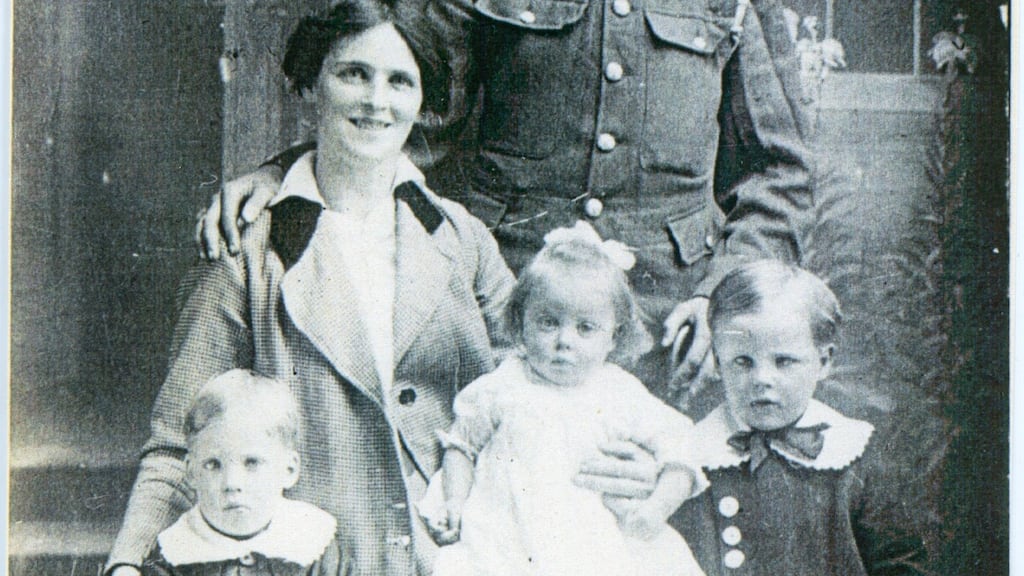At a conference in Glasnevin Cemetery Museum on Wednesday, the audience included Eithne Wilson, one of countless millions of people whose family trees include victims of the Spanish Flu of 1918.
It was 100 years to the day since her uncle, Paddy Dalton, died of the illness. That he was ever anyone's uncle now seems odd, because as a picture in the accompanying exhibition illustrated, he was only seven at the time, and remains frozen at that age forever. One of the more poignant exhibits is a sample of his handwriting practice in a schoolbook, impeccably neat, from a week before.
But as well as bringing personal tragedies everywhere it went, the pandemic influenced the fates of whole countries, even continents. We know it coincided with the last year of the war, reaching its peak just as the conflict ended. Less well known is that, by an accident of timing, it may also have determined which side won.
Speakers at the conference included Howard Phillips of the University of Cape Town, perhaps the greatest of all experts on the subject, whose talk was entitled: "No Great War, No Great Flu; No Great Flu, no German Defeat?"
The first half of his thesis is self-evident. Vast numbers of young men, gathered together in confined spaces, made the war an ideal incubator for viruses. But if the Spanish Flu was famously democratic in its choice of victims, the timing of its travels was more selective.
The first of its three waves hit the western allies in the late spring of 1918, as Germany was launching a series of offensives designed to make the decisive breakthrough. The Germans were in a race against time and full US mobilisation. And they got close to victory, but not close enough, before an unseen enemy, advancing from the west, may have dealt them a fatal blow.
Napoleon knew that luck was always a key factor in war. Defenders of Russia traditionally relied on help from the weather: "Generals January and February". The pivotal Second Battle of the Marne (mid-July to early August 1918), by contrast, is considered a great victory for General Foch, the allied supreme commander.
But as Prof Philips pointed out on Tuesday, the later arrival of the pandemic there meant that "one in five Germans were down – not dead, but ill" at a critical time in the war. Blitzkatarrh, they called it. So maybe General Influenza should share billing with Ferdinand Foch among the era's military masterminds.
Of course suspicion lurked on both sides that the enemy was in some way responsible for the flu. For many English speakers, the coincidence between “germs” and “Germans” was enough to suspect biological warfare. In any case, combatant countries conspired to cover up their losses, lest it encourage the others.
Hence the "Spanish Flu". There was nothing particularly Spanish about it, but Spain was not involved in the war, so the epidemic there could be reported freely, especially as it affected one of the celebrity victims, King Alfonso. He recovered, eventually, unlike another European royal, Crown Prince Erik of Sweden, who succumbed in September 1918.
The prince was 29, and so part of an age group disproportionately affected by the 1918 outbreak. One theory to explain this, as outlined on Tuesday by Anne Moore of UCC, is what's termed – in a mixture of science and religion – "original antigenic sin".
It means a propensity to react to a virus based on an immunological memory of infection with something similar. Back in 1889-90, there had been a pandemic called the “Russian Flu”. It’s possible that people whose first viral encounter was with that were more vulnerable to the 1918 variant. Crown Prince Erik, for example, had been born in 1889.
The fact that the Spanish Flu targeted aristocrats should not be overstated. The poor were, as usual, worst affected. As Patricia Marsh of Queen's University told the conference, high death rates in rural Donegal may be explained by a vicious circle of seasonal farm labourers falling victim in England and Scotland and then being waked at home in tiny, crowded cottages, where mourners infected each other.
Similarly, a map of Dublin in the Glasnevin exhibition shows a strong correlation between flu fatalities and tenements. When one family in Corporation Street hadn’t been seen for days by neighbours, a caretaker broke into their room to find the husband, wife, and child immobilised in bed, while an adult female relative sat slumped in a chair. The wife was already dead, the others only just alive. They were taken to hospital, but none survived.











